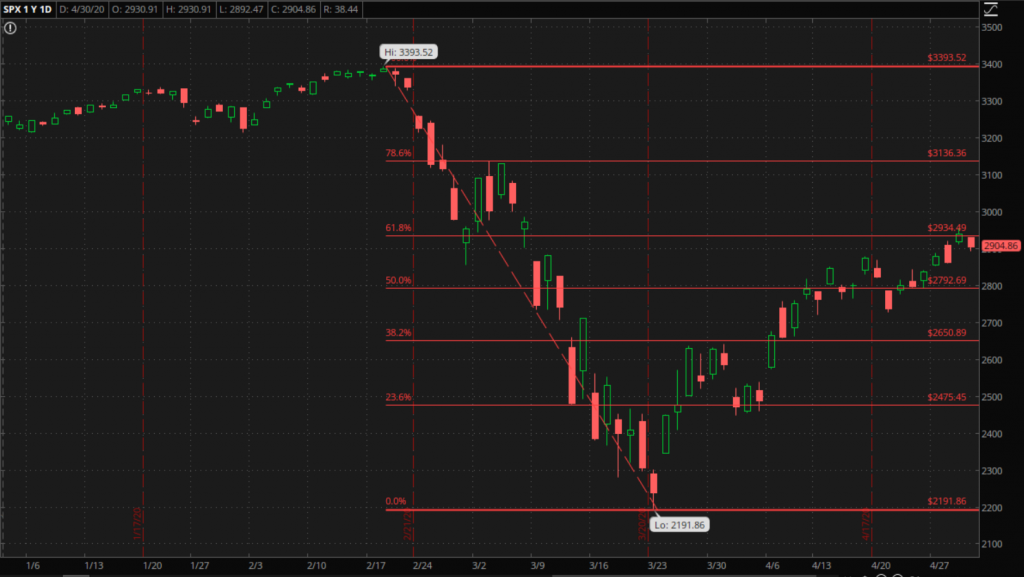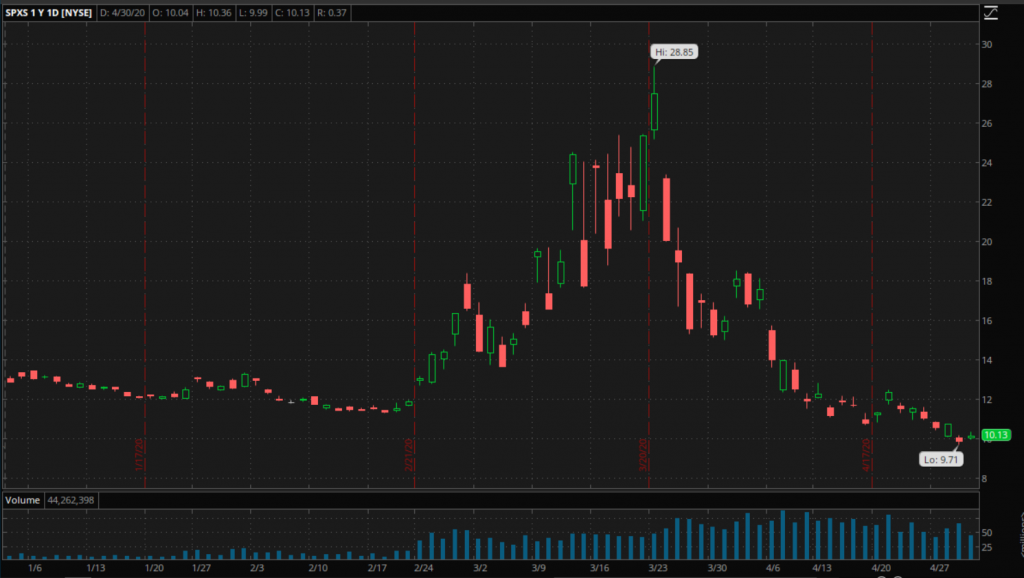Obviously, the principle focus of the Energy Income Trader newsletter is energy. (The clue is in the name). All markets, however, are interdependent, and while commodity prices give energy stocks a life of their own to some extent, they are not immune to the influences of other things. The general direction of the stock market is an important consideration when investing in energy, which is why I offer regular updates on stocks outside the energy sector. Right now, the major indices look to be set for a big move, so it is definitely worth looking at what’s going on.
No Sense At All!
“This market makes no sense” is a phrase that everyone who has ever traded anything has either muttered to themselves or shouted out loud at some point. Usually though, it is the complaint, not the market that is nonsensical.
I was trained never to utter or even think those words, at least not without the addition of the words “…to me”, which then becomes an admission that you got something very wrong. To survive, traders have to trade based on what is, not what could or should have been.
Intellectually I know all that, but even so, when I look at stocks at these levels and at the underlying fundamentals, this market really doesn’t make any sense.
Overdoing the Bounce
Once it became clear that Covid-19 was unlike previous virus scares, and that the response to it was going to involve shutting down big chunks of the economy both here in the U.S. and around the globe, stocks completely fell out of bed.
That was understandable, but as is the case with most market moves, it continued past its logical endpoint at that time. When I wrote in Energy Income Trader in Mid-March that it looked likely things would turn around soon, it was because the selling was looking panicked. This was obviously going to be a big shock, but a return to normality would come and memories of the bounce back in 2009 would ensure there were plenty of buyers around.
That turned out to be a fairly good estimate of the bottom, but retracements tend to get overdone in the same way that drops do.
“This too shall pass” was and still is a legitimate saying, but it doesn’t address when it will pass, nor does it mean that when it does, we will immediately be back to square one.
The Timing Issue
This rally is based on some good news regarding progress on a cure or vaccine, and on some states starting to loosen restrictions or at least plan to do so. That, however, ignores a problem. States can say what they want, but until everybody feels safe going back to normal life, economic disruption will remain.
The market seems to be working on the assumption that the good news means a vaccine which would make a return to work possible is imminent. The good Dr. Fauci, however, disagrees. He says only that a vaccine in numbers large enough to be significant “could” be available by January.
That is nine months away.
The Valuation Issue
For the sake of argument, though, let’s say we did find a vaccine, complete trials and manufacture millions of doses within a month or so. Does that mean that we will return to the pre-crash highs?
Well, if you look at stocks as an expression of corporate profitability, no.
This earnings season is approximately halfway done, and so far, the average decline in earnings versus the same quarter last year is over fifteen percent. That is based on a quarter that contained two months of rapid growth before the collapse as well, so things are only going to get worse on the earnings front.
Lower earnings next quarter, too. YoY is one of the few things that we can count on. The uncertainty of what is ahead is so great that most companies are not even trying to give guidance for the rest of the year. And yet the S&P 500 is right around where it was a year ago.
That makes no sense.
The Economy
I guess it could make sense if either the damage to the economy wasn’t a great as feared, or if it were of a transient enough nature to make a rapid recovery almost certain.
Neither of those things are true.
Including the ugly weekly unemployment numbers released this morning, over 30 million jobs have been lost in America in the last six weeks, and as yet, there is no sign of the losses stopping.
Earlier this week, we saw the first read for U.S. GDP for Q1, a drop of 4.8%. That included the previously mentioned two months of growth, though, and most models are showing a massive contraction in Q2. Goldman Sachs, for example, is predicting a 34% overall decline in GDP.
Even in exceptional circumstances like these, that isn’t something an economy can recover from quickly.
As I said, this market makes no sense.
The Technical Picture

The fundamentals of the economy and stock valuations look bad, but the technical picture is, if anything, even worse.
Yesterday’s big up day saw the S&P climb briefly above a 61.8% retracement, a level that is significant in Fibonacci analysis and often marks the top of a bounce. The index pulled back later though, and closed right at that level, then today’s weakness re-established it below the line.
When you are looking at a retracement of a big move, that is about as bearish a signal as you can get.
How to Play It
The thing is, at some point, all this optimism will be justified. There will be a recovery, but probably not as strong and swift as stocks are currently indicating. That means that even though I am expecting another big drop before long, I won’t be selling everything.
What I bought near the last lows were designed to be long-term investments and they have a decent cushion against loss. That is certainly true of the energy stocks, where both crude and natural gas have recovered a lot of ground, which will at least limit the downside.
The degree of volatility in oil and gas and the ongoing big cuts in output and capex also make me a little more wary of just sitting on those energy stocks and waiting it out.
Still, I can’t feel as strongly about something as I do about this and not trade it.
My answer is to buy SPXS, a 3x leveraged Bear S&P 500 ETF. That means that, in theory, SPXS will gain three times any percentage loss in the index. Of course, that also means it will magnify losses three times if the S&P defies logic and keeps climbing, so a stop loss of some kind is a must. The burgeoning bounce off that 61.8% level gives us a good level to use for that.

If you are to go this route, you must keep two things in mind. As I said above, you HAVE to set and stick to stops on a trade like this as the potential loses are just too big if you don’t.
Also remember that this is designed as a short-term trade to take advantage of an anticipated sharp drop. Leveraged ETFs have high fees and other costs that distort returns over time, so they are not for long-term holding.
With those two provisos though, positioning for a drop in stocks through SPXS looks like a decent trade right now.
After all, this market makes no sense!
Cheers,

